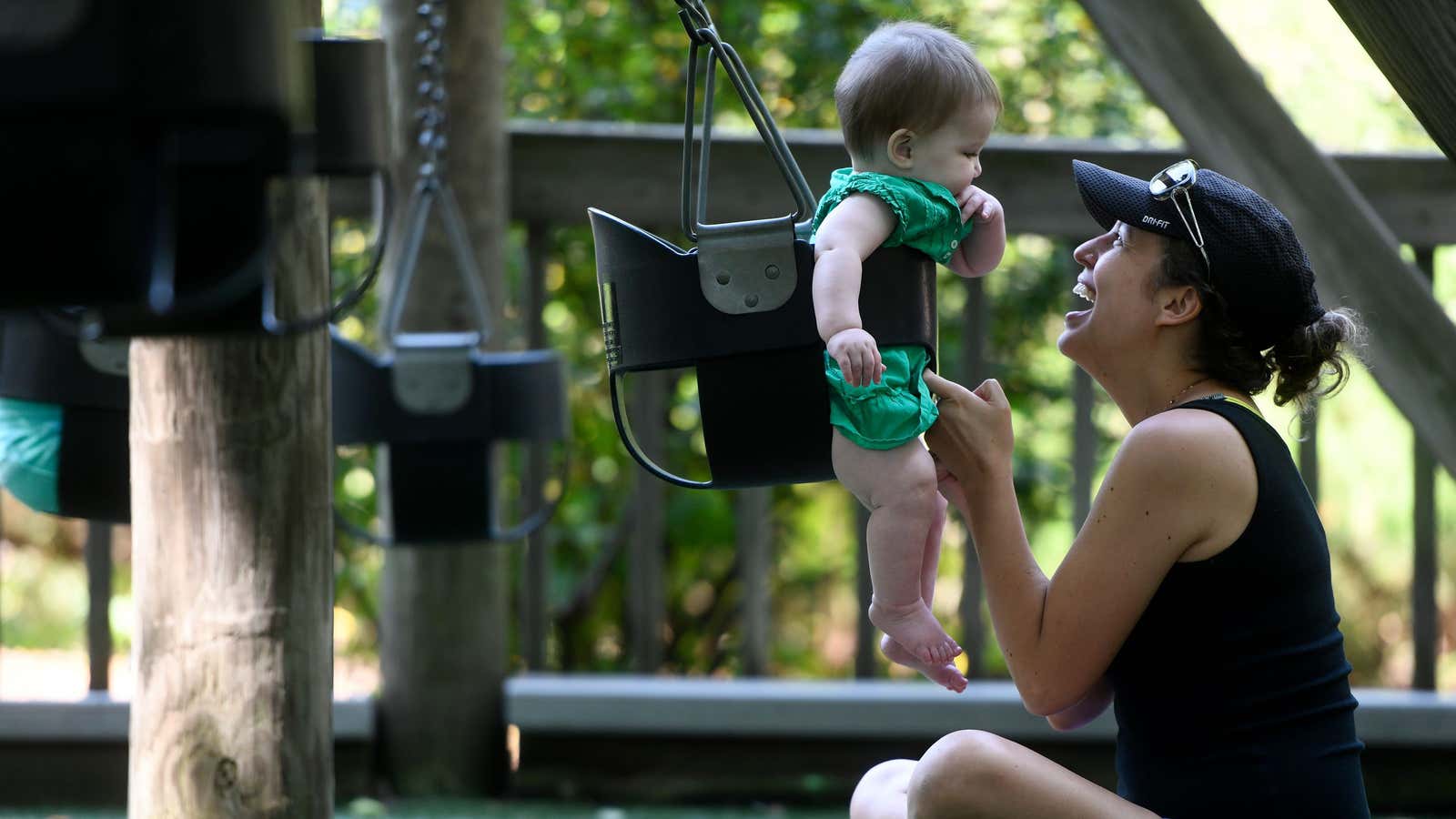I’m learning to play guitar for the first time. And by “learning,” I mean I’m two days in on the long road to Joan Jett City. I’ve stumbled through the first six notes, and though my fingers are numb, my brain is lit up.
This isn’t the first time, either. My brain on music is an echo of where my mind was two year ago, just after I had my daughter. As a new mom, just as I am now as a new guitarist, I was vastly receptive to new stimuli, willing to take up these parts and improvise in them in startling ways.
What connects both learning a new instrument and becoming a mother, I believe, is a focus on play.
Growing a human being is no small endeavor, from the physical changes to my body (hello salt-and-vinegar potato chip cravings!) to building the future I dream for her (vibrant! empowered! inclusive!) but incessantly worry about. While I was pregnant, a tsunami of hormones, like progesterone, were flooding my body and reorganizing my frontal cortex, changing my perception of emotional intelligence, social cognition, and theory of mind. There’s only one other time this sort of thing happens in a person’s life: Puberty. That’s stunningly and wonderfully insane to fathom. Adolescents live in another world—obvi—and my brain was channeling the teenage version of itself. Maturing through a loss of gray matter, fine-tuning synapses, and streamlining neural connections to make more efficient evaluations of what the people around me were thinking.
Fast forward four months to transitioning back to work, and my first project was based in Japan, an opportunity to channel these changes in my brain as a new willingness to engage in play. My Japanese linguistic skills are limited to an archive of three phrases, (meccha kakkoii, arigato, and ohayo gozaimasu). My mom brain helped me “converse” with our Japanese clients without a reliance on words. In full-on play mode, my verbal communication evolved into a dialogue rich with contextual social clues, acted-out body language, and knowledge shared through collaborative drawing drawn from natural play cues.
Since then, I’ve recognized that both my music brain and my pregnancy brain are excellent at confronting ambiguity. How might my music brain play the famed “Back in Black” riff when I don’t yet know the chords? I listen to the song and—undaunted by my inexperience—try and pick out the chords with my fingers. My hands roam the neck for the right notes, exploring their way north and south, unafraid of being sharp or flat, confident that I’ll eventually find my way to the tune. For my pregnancy brain: how on earth do I pump and host a room full of 60 seasoned policy people to brainstorm the future of paid leave? This is a chance to leverage that same power of play. I turn the session into a form of group play through creative and collective drawing exercises, where seasoned politicos imagine what could be, together—not what should be, apart—leaving me breaks while the room is humming to step out and pump some #liquidgold.
In both cases, this kind of immersive method acting, or play, created the open mindset I thrive on as a designer.
Play makes us less rigid, and more willing to improvise in a spirited way. (Ever watch a new mom imitate the characters’ voices as she reads a book to her new kid?). Play brings resilience, creativity, and social awareness, and it lies at the intersection of flexibility of action and intellection. Motherhood and learning the guitar are two paths that have led me to more play, but they’re not the only ways. Here are types of play that anyone can use as tools at work.
- Exploratory play: I liken this to play that encourages people to spend time inventing, thinking with their hands, and figuring out how an idea works before they’re accountable for a solution, failing fast to succeed with speed. Sculpting Play-Doh with my daughter is a direct translation to forming 3D prototypes for clients to feel immersed in a new design.
- Cooperative play: This can be defined as play inspired by camaraderie and fun, with a healthy dose of competition. It’s akin to a brainstorm that builds off the collective group or chance encounters with new people to fuel creativity. Sliding down slides while holding the hand of my toddler is a mix of fear and fascination; so too is teaming up with new groups of people to figure out the future of the workplace and its impact on society.
- Narrative play: This form of play harkens to a history born around the Neolithic fire, weaving the story of a character’s purpose and the context together so that those listening, or viewing, can empathically feel it deep in their prehistoric bones. Calming my daughter’s nightmares with an imagined story of a family of seahorses in space—yep!—draws parallels to the storytelling mechanisms required (challenge, rise, redemption) to bring a 0client through something new and unknown.
Those of us who have a good deal of play in our professional expectations and sense of self will be the ones who can best adapt to what’s sure to be a shape-shifting workplace. Parents may have the advantage here simply because they stay connected more deeply to their kids than others—and thus retain a lively sense of play. But that doesn’t mean you have to have a kid to channel your inner child’s sense of play.
So don’t forget. Jog to your project rooms. Tell your stories. And play well with others.
Jen Ashman is a senior designer at EPAM Continuum.
